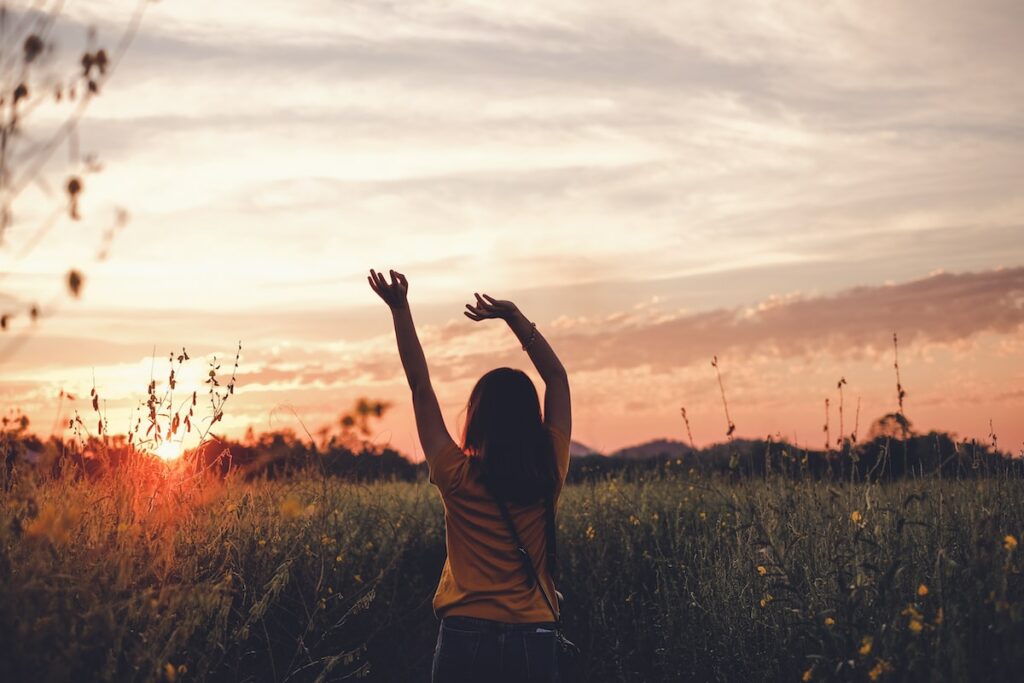The geography of wellness and mindful living

Some people die at 25 and aren’t buried until 75
Benjamin Franklin
As we navigate through the complexities of the 21st century, the concept of wellness and mindful living increasingly occupies centre stage in discussions about health and happiness. This shift towards holistic wellbeing isn’t merely a fashionable trend; it represents a profound change in our understanding of what it means to live well, bolstered by a growing body of scientific evidence.
In recent years, there has been a growing interest in wellness and mindful living. People are increasingly prioritizing their physical, mental, and emotional well-being, and seeking out ways to improve their quality of life. This trend has led to a renewed focus on the environment and how it can impact our health and well-being. In this article, we will explore the geography of wellness and mindful living, and how our surroundings can influence our health and happiness.

What is wellness and mindful living?
At its core, wellness is a broad concept that encapsulates physical, emotional, and mental wellbeing. A study published in the International Journal of Environmental Research and Public Health in 2021 showed that people who reported a higher level of wellness were less likely to suffer from chronic diseases like diabetes, heart disease, and mental health disorders.
Traditionally, health has been defined primarily in physical terms, focusing on the absence of disease. However, this perspective is changing, and for good reason. The World Health Organization now defines health as “a state of complete physical, mental, and social well-being and not merely the absence of disease or infirmity.” This definition reflects an understanding that wellness is about more than not being ill; it’s about thriving in all areas of life.
Meanwhile, mindful living, a concept deeply rooted in ancient wisdom traditions and now validated by modern neuroscience, can be a powerful tool for promoting wellness. Mindfulness, in essence, is about being present and engaged in whatever we’re doing, free from distraction or judgment, with a soft and open mind.
One of the most compelling pieces of evidence for the benefits of mindfulness comes from neuroscience. Studies using functional magnetic resonance imaging (fMRI) have shown that mindfulness practice can lead to changes in the brain’s structure and function. According to a Harvard Medical School study from 2011, eight weeks of Mindfulness-Based Stress Reduction (MBSR) led to an increase in cortical thickness in the hippocampus, which governs learning and memory, and in certain areas of the brain that play roles in emotion regulation.
Mindful living has a profound impact on our physical health. A 2013 study in the journal Psychoneuroendocrinology found that participants who underwent a three-month meditation retreat showed a significant decrease in the expression of pro-inflammatory genes, suggesting that mindfulness could potentially help regulate our body’s inflammatory responses.
But the benefits of mindfulness aren’t just individual; they can also ripple out into our relationships and communities. A 2019 study published in the Journal of Applied Psychology revealed that mindfulness can improve interpersonal relationships at work, leading to better teamwork and cooperation. It seems that when we’re present and fully engaged, we’re not just healthier and happier—we’re also better colleagues, friends, and family members.
Wellness and mindful living are not just about personal growth or self-improvement. They represent a fundamental shift in how we understand health and happiness. Instead of focusing on treating disease, we’re learning to focus on promoting wellbeing. Instead of living in automatic mode, we’re learning to be present and engaged in our lives.
Ultimately, embracing wellness and mindful living is about more than just improving our own lives. It’s about contributing to a healthier, more compassionate world. As the evidence continues to mount, it’s becoming clear that these aren’t just nice ideas—they’re essential components of a new age of human flourishing.
In conclusion, wellness and mindful living are powerful paradigms that can guide us on our journey towards better health, happiness, and life satisfaction. They invite us to shift from a disease-centered perspective on health to a wellbeing-centred perspective, and from automatic, distracted living to present, engaged living. Supported by a growing body of scientific evidence, they offer a promising path towards not just surviving, but thriving in the 21st century.
Wellness is a holistic concept that encompasses all aspects of health, including physical, mental, and emotional well-being. Mindful living, on the other hand, is a practice that involves being present and fully engaged in the moment, and cultivating a sense of gratitude and appreciation for life’s simple pleasures. Together, wellness and mindful living promote a balanced and fulfilling life, where we can thrive both physically and mentally.
The concept of wellness real estate can be traced back to the early 20th century, when the idea of “sanatoriums” emerged as a popular way for people to recover from illness or injury. These facilities were often located in natural settings and featured a range of health-promoting amenities such as fresh air, exercise, and healthy food.
In the 1970s, the idea of wellness-focused living gained popularity in the United States with the development of gated communities that incorporated fitness facilities, pools, and other amenities designed to promote an active lifestyle. These communities were often marketed to affluent retirees who were looking for a healthy and active lifestyle.
By the 1990s, the concept of wellness real estate had expanded to include luxury spa resorts and hotels that offered a range of health and wellness programs, from yoga and meditation to detox diets and alternative therapies.
In recent years, the wellness real estate industry has exploded in popularity, with developers incorporating wellness-focused amenities into residential properties of all kinds, from affordable housing to luxury apartments and single-family homes. This trend has been driven by a growing awareness of the importance of health and wellness, as well as a desire for more sustainable and eco-friendly living spaces.
Today, wellness real estate is a global industry worth billions of dollars, with developers and architects around the world incorporating wellness-focused design principles into their projects. From green spaces and natural light to air and water filtration systems, these homes are designed to promote a healthy and balanced lifestyle.
A brief history of wellness
Ancient Wellness practices emerged as early as 3000-1500 BC with Ayurveda, a holistic system that promotes harmony between the body, mind, and spirit. Traditional Chinese Medicine (TCM) also developed around 3000-2000 BC, influenced by Taoism and Buddhism, and became popular worldwide. In 500 BC, the ancient Greek physician Hippocrates focused on preventing sickness by promoting a healthy lifestyle. Ancient Rome emphasized disease prevention and public health, leading to a healthier population.
In the 19th century, new intellectual movements, spiritual philosophies, and medical practices emerged, such as homeopathy, osteopathy, chiropractic, and naturopathy. These alternative healthcare methods focused on self-healing, holistic approaches, and preventive care, while the “mind-cure movements,” including New Thought and Christian Science, emphasized the connection between mental and spiritual states and physical health. The 19th-century systems paved the way for the current thriving wellness and self-help movements, and some of these approaches are regaining popularity within the mainstream medical community.
The word “wellness” first appeared in the English language in the 1650s, referring to the state of being well or in good health. In the 20th century, the concept of wellness gained traction with physician Halbert L. Dunn’s book High-Level Wellness, published in 1961. Dunn’s ideas were later embraced, leading to the modern wellness movement, which emphasizes a proactive approach to maintaining health through diet, exercise, mental and spiritual health, and other lifestyle measures.
The difference between wellness and wellbeing
Wellness and wellbeing are two terms that are often used interchangeably, but they actually have different meanings. Wellness generally refers to the state of being in good health, both physically and mentally. It encompasses a range of factors that contribute to overall health, including exercise, nutrition, sleep, stress management, and disease prevention. A person who is in a state of wellness is generally free from illness or disease, and is able to function optimally in their daily life.
On the other hand, wellbeing refers to a broader sense of happiness and contentment with one’s life. It encompasses factors such as social connectedness, a sense of purpose or meaning, financial stability, and overall life satisfaction. While wellness is focused on physical and mental health, wellbeing is focused on overall quality of life.
WHO defines Quality of Life as an individual’s perception of their position in life in the context of the culture and value systems in which they live and in relation to their goals, expectations, standards and concerns.
Measuring Quality of Life- World Health Organisation
In essence, wellness is a subset of wellbeing. While being physically and mentally healthy is an important component of overall wellbeing, it is not the only factor that contributes to a person’s sense of wellbeing. Factors such as social support, financial stability, and a sense of purpose are also important for overall wellbeing.
Ultimately, both wellness and wellbeing are important aspects of a person’s overall health and happiness, and should be given equal attention and consideration.
The Geography of Wellness and Mindful Living: Exploring the Landscape of Holistic Health
The geography of wellness and mindful living isn’t mapped with physical coordinates. Instead, it’s a landscape shaped by cultural, social, and individual factors that influence how we understand and experience health and wellbeing. This geography is not static but rather a dynamic terrain that evolves as our understanding of wellness and mindfulness deepens, informed by both scientific research and lived experiences.
One of the fascinating aspects of this geography is its universality. Wellness and mindful living are not confined to any particular culture or region. They are human experiences, rooted in our shared capacity for awareness, compassion, and resilience. However, the specific expressions of wellness and mindfulness can vary greatly across different cultures and societies.
For instance, in many Western societies, wellness and mindfulness have been heavily influenced by the biomedical model of health, which emphasizes physical health and the treatment of disease. This is reflected in the popularity of fitness programs, dietary plans, and mindfulness-based interventions for stress reduction and mental health.
In contrast, many Eastern cultures have long embraced a more holistic view of health, integrating physical, mental, and spiritual aspects of wellbeing. The practice of mindfulness, for instance, has its roots in Buddhist meditation practices and has been an integral part of Eastern wellness traditions for millennia.
Meanwhile, Indigenous cultures around the world have their unique perspectives on wellness and mindful living, often deeply connected with the natural environment and community. In many Indigenous cultures, wellness is understood in terms of harmony and balance — not just within the individual, but also within the community and the natural world.
The influence of these cultural perspectives on wellness and mindfulness is not confined within geographical borders. In our increasingly interconnected world, ideas and practices related to wellness and mindfulness are being shared and adapted across cultures, creating a truly global geography of wellness and mindful living.
Yet, wellness and mindfulness are also profoundly personal, shaped by our individual experiences, beliefs, and needs. The geography of wellness and mindful living, therefore, is not just a global or cultural landscape, but also an intimate, personal terrain that we each navigate in our unique ways.
This personal geography is shaped by a multitude of factors, from our physical health and mental wellbeing to our relationships, work, and environment. For instance, research has shown that socioeconomic factors can significantly impact our health and wellbeing, with people in lower socioeconomic groups often facing higher levels of stress and poorer health outcomes.
At the same time, our personal geography of wellness and mindfulness is not fixed but can be transformed through our choices and actions. Mindful living, in particular, offers powerful tools for cultivating greater awareness, compassion, and resilience, enabling us to navigate our personal landscape of wellness with greater skill and ease.
The geography of wellness and mindful living is a rich and complex terrain, shaped by cultural, social, and individual factors. Exploring this geography can deepen our understanding of health and wellbeing, enabling us to navigate our lives with greater awareness, compassion, and resilience. Whether we’re drawing from ancient wisdom traditions or cutting-edge scientific research, the journey towards wellness and mindful living is a universal human endeavour, reflecting our shared aspiration for health, happiness, and fulfilment.
Influencing factors that nurture wellness and mindful living
Nature is one of the most powerful tools we have for promoting wellness and mindful living. Studies have shown that spending time in nature can improve our physical health by lowering our blood pressure and reducing our risk of chronic diseases. Nature can also boost our mental and emotional well-being, by reducing stress and anxiety and promoting feelings of relaxation and happiness.
Green spaces, such as parks and gardens, are particularly important in urban areas, where access to nature is often limited. These spaces provide opportunities for physical activity, social interaction, and relaxation, all of which can improve our well-being. Additionally, green spaces can help mitigate the negative impacts of urbanization, such as air and noise pollution, and promote sustainable development.
Your environment plays a significant role in our well-being, as it can shape our experiences, perspectives, and behaviours. Our physical location can impact our health and well-being in various ways, from the quality of the air we breathe to the availability of green spaces for physical activity and relaxation. Our social environment, including the people and communities we interact with, can also affect our mental and emotional health.
The built environment, including buildings, streets, and public spaces, can also impact our health and well-being. For example, poorly designed buildings with inadequate ventilation can lead to indoor air pollution, which can cause respiratory problems and other health issues. Similarly, poorly designed streets and public spaces can discourage physical activity and social interaction, leading to feelings of isolation and loneliness.
Community is a vital component of well-being, as it provides us with a sense of belonging and connection. Strong communities can support and empower individuals, and provide opportunities for social interaction and collective action. In contrast, weak or fragmented communities can contribute to feelings of isolation, loneliness, and social exclusion, which can negatively impact our mental and emotional health.
Culture plays a significant role in shaping our attitudes, beliefs, and behaviours, including those related to health and well-being. Different cultures have different values, traditions, and practices that can either promote or hinder well-being. For example, some cultures prioritize physical activity and healthy eating, while others may prioritize relaxation and social interaction.

The role of technology in wellness and mindful living
Technology has the potential to both facilitate and hinder wellness and mindful living. On one hand, technology can provide us with access to information, resources, and tools that can support our well-being. For example, fitness apps and meditation apps can help us track our progress and cultivate mindfulness. On the other hand, technology can also be a source of stress and distraction, and can contribute to feelings of social isolation and loneliness
There are various strategies we can use to nurture wellness and mindful living in our daily lives, regardless of where we live. These strategies include:
Practicing mindfulness
Mindfulness involves paying attention to the present moment without judgment, and can help reduce stress and anxiety. There are various techniques for practicing mindfulness, such as meditation, deep breathing exercises, and yoga.
Engaging in physical activity
Regular physical activity is essential for maintaining good health, and can help reduce the risk of chronic diseases such as heart disease, diabetes, and obesity. Physical activity can also improve mental and emotional well-being, by reducing stress and anxiety and promoting feelings of happiness and relaxation.
Eating a balanced diet
A balanced diet, consisting of a variety of whole foods such as fruits, vegetables, whole grains, and lean proteins, can provide us with the nutrients we need for optimal health. Eating a healthy diet can also help reduce the risk of chronic diseases, and promote mental and emotional well-being.
Spending time in nature
As discussed earlier, spending time in nature can have significant health benefits, such as reducing stress and anxiety and promoting feelings of relaxation and happiness. Even just a few minutes in nature each day can make a difference.
Building strong social connections
As humans, we are social beings and need social connections to thrive. Building and maintaining strong social connections, whether through family, friends, or community, can provide us with a sense of belonging and support, and promote mental and emotional well-being.
The geography of wellness and mindful living is a complex and multifaceted topic that encompasses various aspects of our environment and lifestyle. Our surroundings can significantly impact our health and well-being, and it is essential to prioritize strategies that promote wellness and mindful living in our daily lives. By practicing mindfulness, engaging in physical activity, eating a balanced diet, spending time in nature, and building strong social connections, we can create a healthier, happier, and more fulfilling life.
Do you want to share your story and inspire our readers ? Know that every story is paving the way for a brighter, happier future.

FAQs
- How can I practice mindfulness if I don’t have much time? A: Even just a few minutes of mindfulness practice per day can make a difference. Try starting with short meditation sessions or deep breathing exercises during breaks throughout the day.
- How can I access nature if I live in an urban area? A: Look for parks, gardens, or green spaces in your area. You can also consider taking a walk or bike ride in a nearby nature reserve or forest.
- Can cultural differences impact my well-being? A: Yes, different cultural values, traditions, and practices can impact our attitudes, beliefs, and behaviors related to health and well-being.
- Can technology help me with wellness and mindful living? A: Yes, there are various apps and tools available that can help you track your progress and cultivate mindfulness, such as fitness apps and meditation apps.
- How can I build strong social connections? A: Consider joining a community group, volunteering, or taking part in social activities that interest you. You can also reach out to family and friends regularly to maintain connections.




